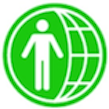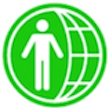Changing health care careers a sign of the times
 Sunday, February 12, 2017 at 3:02PM
Sunday, February 12, 2017 at 3:02PM
By David South
Hospital News (Canada), June 1992
Ontario’s health care system is in the midst of a big change. But where are the new jobs going to be and how can health care workers prepare for the coming crunch?
“Anybody who thought they could progress through the health care system until retirement is in for a shock,” said Ruth Robinson, a national health care consultant for Peat Marwick Stevenson and Kellogg management consultants.
Radical changes are taking place in the health care system and it looks like traditionally safe occupations are in for a shake-up.
“Hospitals are being pressured to change fundamentally,” said Ms. Robinson. “The net effect is fewer jobs. A lot of people will have to think about new careers.”
In the Ministry of Health working document entitled Goals and Strategic Priorities, released in January, the fundamental shift from treatment to disease prevention and health promotion is laid out in generalities.
The goals range from health equity for aboriginals, women, children and AIDS patients to better management of costs to development of a stronger health care industry that will jump start the economy. And they range from the reorganization of professional responsibilities to promotion of services outside institutions with the goal of keeping people out of hospitals.
One thing is clear, the talk is about big changes. But talk is cheap to laid-off health care workers looking for new jobs.
The provincial government’s recently passed, but yet to be proclaimed, Regulated Health Professions Act will have serious repercusions for all health care providers.
“Traditionally, doctors have an exclusive domain over a wide area,” said Charlie Bigenwald, executive director of health human resources planning at the Ministry of Health. “Even though other people could do things, they had to be delegated by a doctor. With the legislation, we have pushed back what doctors can do. This means there will be more opportunity for a wider variety of health care workers to get into those areas.”
Midwifery is one of the benefactors of changes in regulations. The Ministry of Health is looking into having a university-based program for midwives.
Ms. Robinson predicted nurses and middle management will suffer the most in the change to community-based health care.
“Nurses will need to get a bachelor degree if they hope to compete for jobs,” she said.
As for middle managers, who often have clinical skills, they will have to reconsider staying in health care, she said. “They will disappear significantly. They can advance themselves by getting back to clinical skills or consider management positions in non-health care areas.
“There is nothing to be ashamed of about career changes these days,” she added.
In the shift towards community-based care, opportunities will arise for health care workers who can offer creative solutions to improve service delivery.
“For nurses, we currently have something called the Nursing Innovation Fund where individuals can apply for a wide variety of developmental things like attending workshops, conferences and training programs. We process 2,500 applications a year,” said Mr. Bigenwald.
The Ministry of Health hopes the future sees a health care system that adds to the province’s economy rather than drains it.
“We spend $17 billion a year on health care. We never looked a the health care system as an economic motor in the past. The question we are asking right now is ‘why can’t an Ontario firm make the carpets, beds, sutures etc?’, said Mr. Bigenwald.
Ms. Robinson said “Governments are running out of money and can’t increase funding. They will be looking for more partnerships in the private sector. In this climate, creative solutions to health care delivery have a great opportunity.”
 1992,
1992,  Canada,
Canada,  David South,
David South,  David South Consulting,
David South Consulting,  Hospital News,
Hospital News,  Ontario,
Ontario,  careers,
careers,  health,
health,  health care,
health care,  innovation,
innovation,  medicare,
medicare,  medicine in
medicine in  Health
Health 

